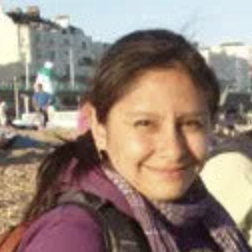LIMA, Peru (9 March, 2012)_While legislation that recognises indigenous territorial rights in Nicaragua represents a significant victory for local forest communities, many governance issues still have to be resolved if they want to keep control over access and use of their land and natural resources, says a new paper by the Center for International Forestry Research.
“The ownership and control of forested land as defined by the legislation has meaning and consequences beyond the establishment of borders for the people living on the land. Not only does it involve the negotiation of physical boundaries, but also the recognition or creation of an entity who fully represents collective interests,” said Anne Larson, a Senior Associate with CIFOR and author of Making the ‘rules of the game’: Constituting territory and authority in Nicaragua’s indigenous communities.
In Nicaragua, cultural identity, forms of organization and land rights of indigenous and ethnic communities were recognized by the Constitution in 1987; the same year that another law, the Autonomy Statute (Law 28) created the North and South Atlantic Autonomous Regions, which cover almost half of the country’s land area, and is home to the most of Nicaragua’s indigenous and ethnic populations.
However, it was not until 2003 that a new law, the Communal Land or Law 445, formally recognised the rights of indigenous peoples and ethnic communities to their historic territories. The law authorised the establishment of an institutional framework for the demarcation and titling of territories and established procedures for titling either as a single community or as a group of communities (multi-community territories). The law also allowed communities to have a greater voice on decisions about their territories and natural resources.
While indigenous lands are still in the process of titling, the recognition of community rights initially led to political conflict between indigenous leaders and grassroots communities, says the study.
“It is not surprising that the definition of territory would cause conflict,” said Larson. “Competing claims to land and resource access were expected to rise, for example, between neighbouring indigenous groups in relation to shared areas granted to only one of them, or – in particular – due to the presence of third parties in indigenous territories.”
But definition of territorial boundaries is just one of the sources of dispute in the recognition of communal rights to land. Institutions created to represent the groups receiving the lands and resources have been another source of conflict. Traditionally, land and resource access allocation are the responsibility of the síndico and wihta, both of whom are communal authorities voted in by assemblies and recognised by the 445 law.
However traditional authority structures can no longer work as they usually did, due to conflicts with other authorities recognised by the legislation. According to the law, authorities at the community level authorise the use of communal land and resources by third parties, while territorial authorities are the ones who authorise the use of resources common to the multiple communities of a territory.
In practice, this has led to confusion, conflict and occasionally manipulation to gain resource access. For example, in one territory tax income is granted to the community level, while in another it is granted to the territorial authority. One territory president told researchers that outside actors interested in resources would go to the other authority if the first one was not amenable to negotiation.
At the communal level, the síndico figure is the one that has been in charge in external agreements. But in recent years it has become evident that síndicos are suffering from lack of experience and negotiation skills and are also susceptible to corruption when negotiating lucrative contracts.
For example, in the Tasba Raya community located on the Mosquito Coast of Nicaragua, a deal between the síndico — whose signature is legally required to authenticate the decision of the collective — and a logging company resulted in payments of less than US$2.00 per family in the collective.
“There was never any report regarding the amount logged or the total amount the síndico received, indicating that the síndico did not best represent the interests of the collective.”
In another case also in Tasba Raya, a logging company hired the síndico who then negotiated contracts with individual community members and didn’t report the terms of his employment or the use of the income that was generated.
“What is really at stake is not only who holds the authority in a legitimate way, but who has the control over land and natural resources and over political power,” said Larson.
Furthermore, community rights risk being hijacked in the process of creating collective property. To avoid this, broad agreements inside communities or multi communities on how representatives are chosen, what are their specific domain of powers and the creation of accountability mechanisms can be part of the solution, said Larson.
“Legitimacy of authority is not a given and the choice and nature of the institution representing the collective will have consequences for the community’s rights and their control over land and resource benefits.”
We want you to share Forests News content, which is licensed under Creative Commons Attribution-NonCommercial-ShareAlike 4.0 International (CC BY-NC-SA 4.0). This means you are free to redistribute our material for non-commercial purposes. All we ask is that you give Forests News appropriate credit and link to the original Forests News content, indicate if changes were made, and distribute your contributions under the same Creative Commons license. You must notify Forests News if you repost, reprint or reuse our materials by contacting forestsnews@cifor-icraf.org.












